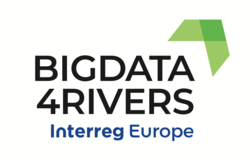The summer months for most of Europe’s inhabitants is a time for vacation and in Sweden the time for swimming in lakes, enjoying the sun and experiencing the vast archipelagos in the larger lakes and the Baltic Sea. However, enormous masses of green sludge can quickly turn the visit to the beach anything but the summer fun you expected.
Since the region of Östergötland is located on productive lands there are effects seen from these activities both in streams, lakes and in the coastal areas of the Baltic sea. Eutrophication is a significant environmental problem in a large part of the county's lakes. A comprehensive monitoring of eutrophication parameters is therefore a priority. Sampling of hydrochemistry and phytoplankton during the late summer complement other environmental monitoring programs as well as recipient control, and provide an overall picture of, above all, eutrophication problems.
Algal blooms are a part of our Swedish summers due to increased amount of light and higher water temperatures in lakes during the warmer period and an excess of nutrients necessary for growth in primary producers. As a consequence, a main object in managing water quality in our region is managing release of nutrients by taking measures such as structure liming in agricultural lands close to waterbodies or creating wetlands and dams to hold nutrients from sources. There are however multiple sources of nutrients apart from agriculture such as wastewater treatment plants, industries and storm water.
Surveys of water quality in lakes during the summer have been carried out in Östergötland almost every year during the period 1969-1993. About 50 lakes have been surveyed annually, returning to the same lake after about five years. No summer surveys were conducted 1994-1997. In 1998, 127 lakes were surveyed, and in 2001 and 2004, 110 lakes were surveyed. Since 2009 the summer surveys have been performed every third year with intensified measurements during 2020-2021 due to a temporary increase in the funding of monitoring connected to status classification and verification of status – preparing for the next water framework management cycle of 2021-2027.
|
|
To be able to know where to place your buck (or euro/crown) on measures to reduce the impact of a source, the knowledge of current status is a key part. At the County administrative board, we are responsible for the regional monitoring of multiple parameters relevant in water management. During the month of August monitoring is at its peak of intensity where multiple parameters are investigated in detail. Monitoring includes measuring:
• Water chemistry - including phosphorous and nitrogen
• Chlorophyll a
• Phytoplankton
• Diatoms
• Inventory of freshwater pearl mussel
• Inventory of fish in watercourses and lakes (electrofishing and net)
A total of 17 lakes, 25 streams in 30 coastal areas were sampled in Östergötland alone!
|
|
The lab reports show a wide range of nutrient concentrations as well as chlorophyll a in the 17 measured lakes. The lake bottom samples were added to enable evaluation of possible issues with internal loading (nutrient rich sediments). Phosphorous concentrations varied and the highest concentration measured was 140 µg/L while the lowest measured concentration was under the detection limit (LOQ 5,0 µg/L) (Table 1). However, the highest surface concentrations of phosphorous are not always corresponding to the highest concentration found in bottom samples. But mostly, high concentrations of chlorophyll a corresponded to higher concentrations of both phosphorous and nitrogen.
NM = Not measured.
| Parameter | Surface sample | Bottom sample | |||
| Total Phosphorous | 140 | < 5,0 | 380 | < 2,0 | |
| Phosphate phosphorous (PO4-P) | 13 | < 1,0 | 33 | < 5,0 | |
| Total Nitrogen | 2500 | 190 | 2700 | 210 | |
| Nitrate + Nitrite nitrogen | 350 | 1,1 | NM | NM | |
| Nitrate-nitrogen (NO3-N) | 340 | < 1,0 | NM | NM | |
| Nitrite-nitrogen (NO2-N) | 12 | < 1,0 | NM | NM | |
| Ammonium nitrogen (NH4-N) | 46 | 3,4 | NM | NM | |
| Chlorophyll A | 290 | <= 1,0 | NM | NM | |
The results gathered during this summer will be used for classifying the status as the next cycle of water management begin in Sweden and for prioritizing measures or extended monitoring. For example, monitoring of nutrients have led to measures such as reduction fishing (removing carp fish to reduce biomass and bioturbation) in lakes and coastal bay areas and establishing mussel farms in the Baltic sea.
Seeing the green sludge when coming to the beach to refresh ourselves in a summer heatstroke remind us why water management and measures are so immensely important. The BIGDATA 4RIVERS project is an important way to share ways to improve water monitoring and management and to develop or adopt measures so that in the future this amazing resource – essential to all humans - is managed both for present and future use.
Sofia Bastviken – Ph. D, Water specialist
Sara Lönnerud – Master of Science, Water specialist
Unit for water, Department of Environment and Nature at the County Administrative Board of Östergötland















